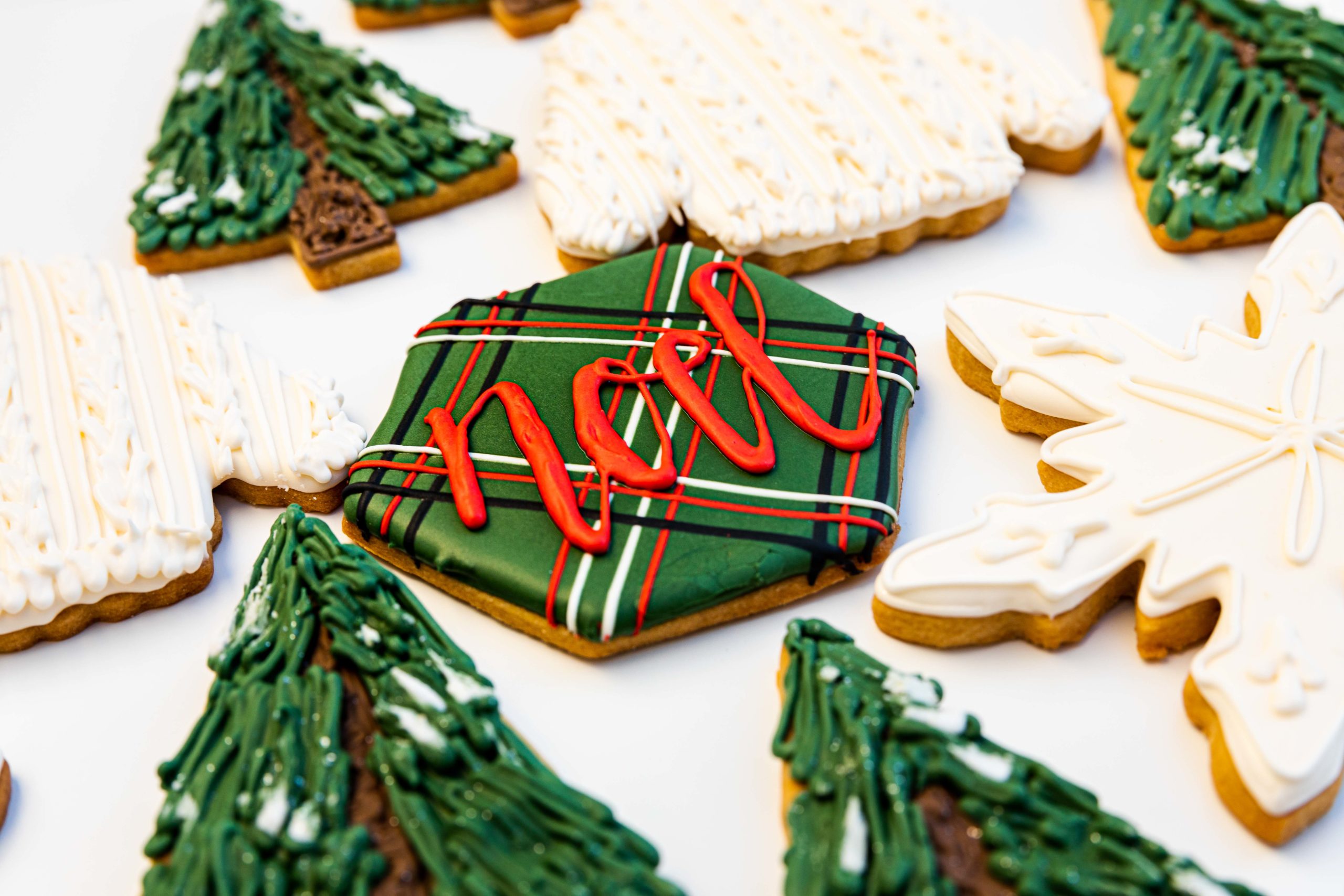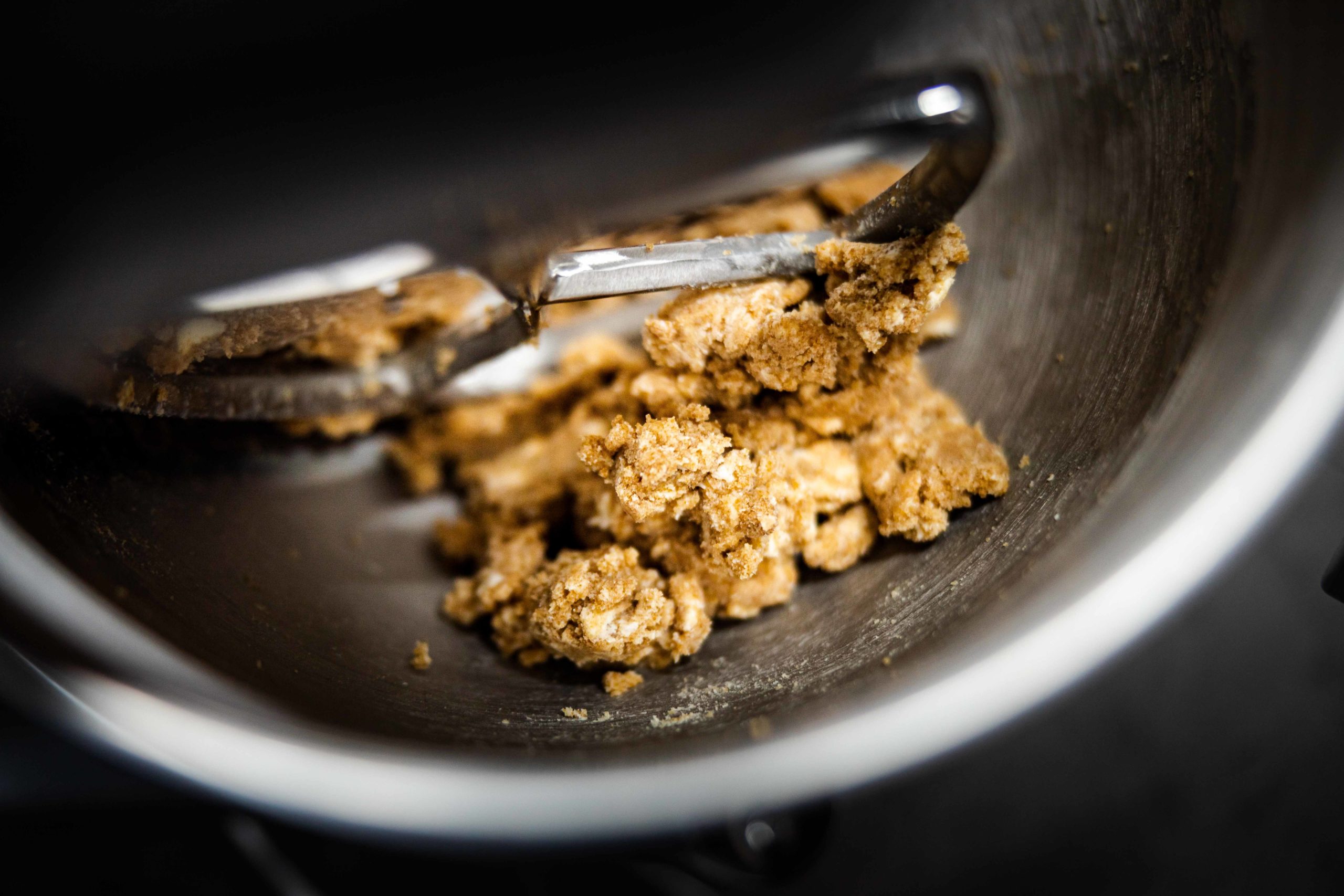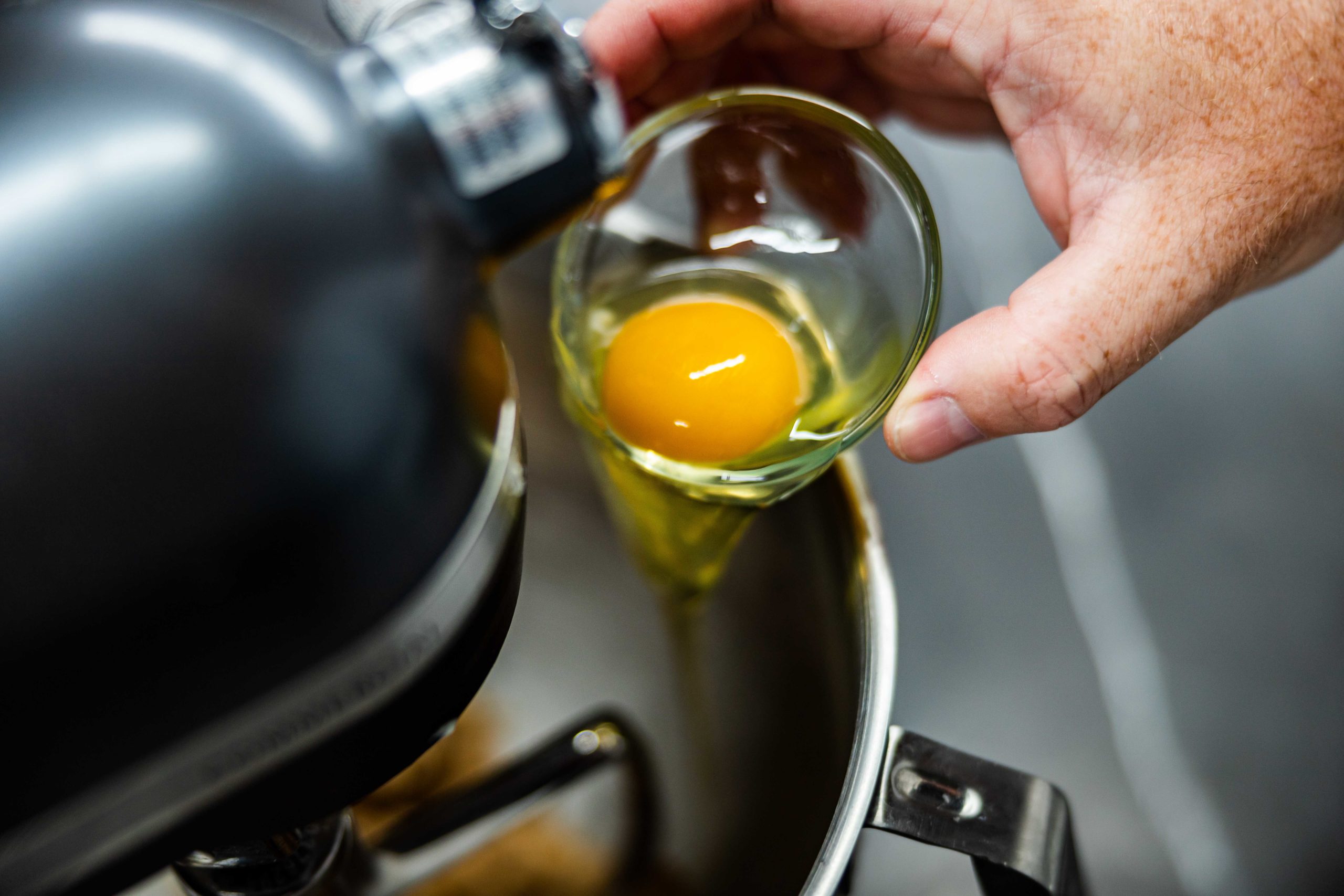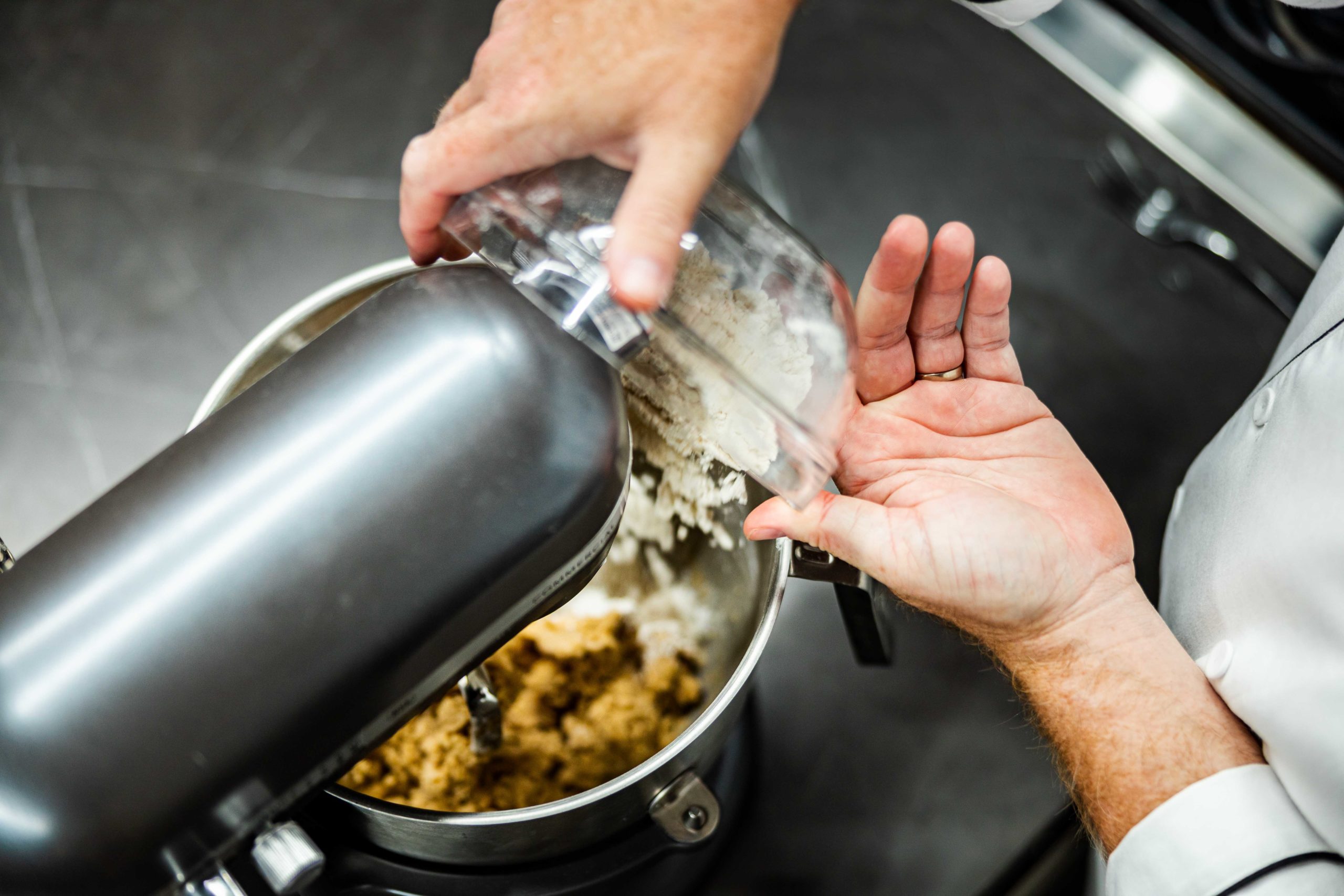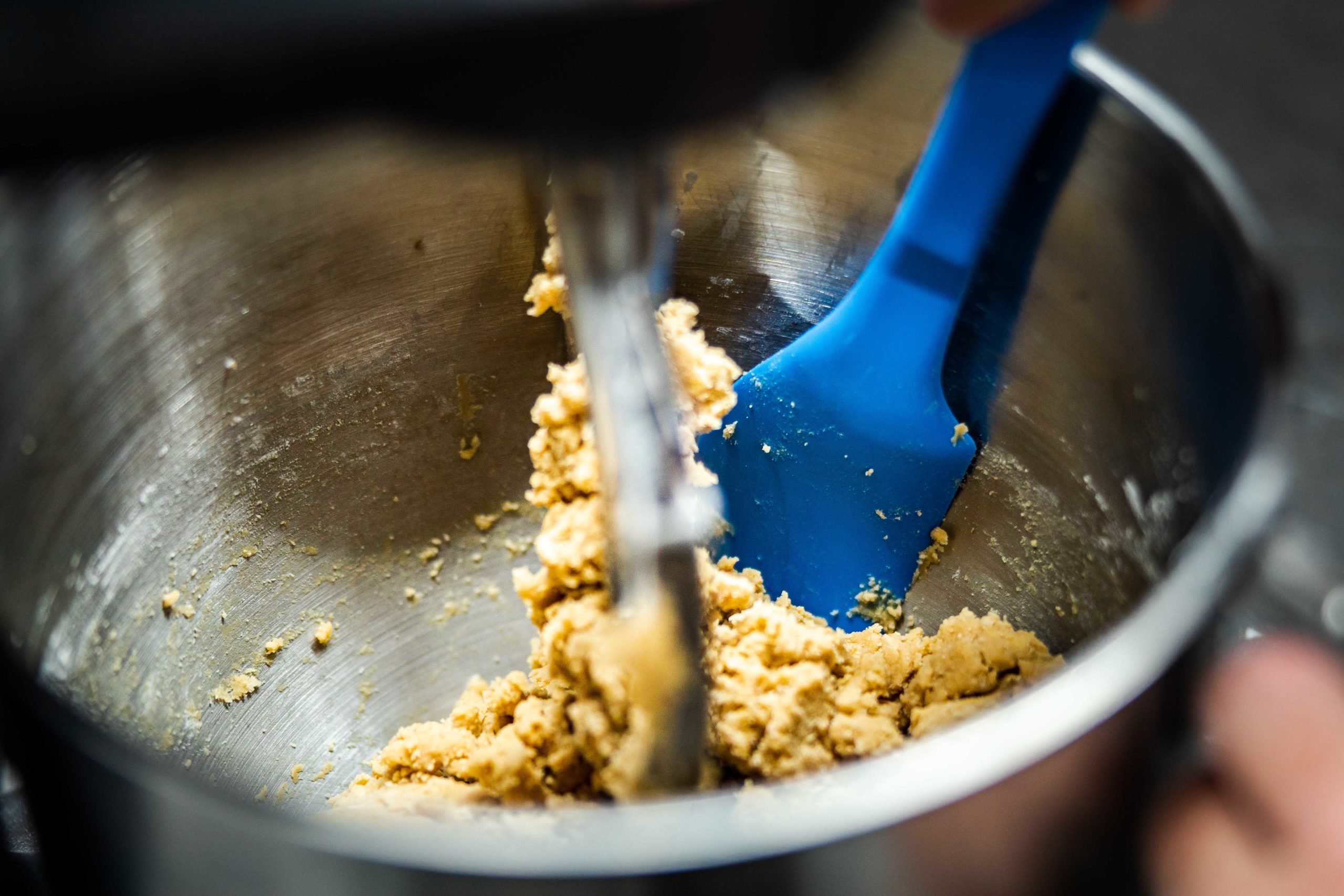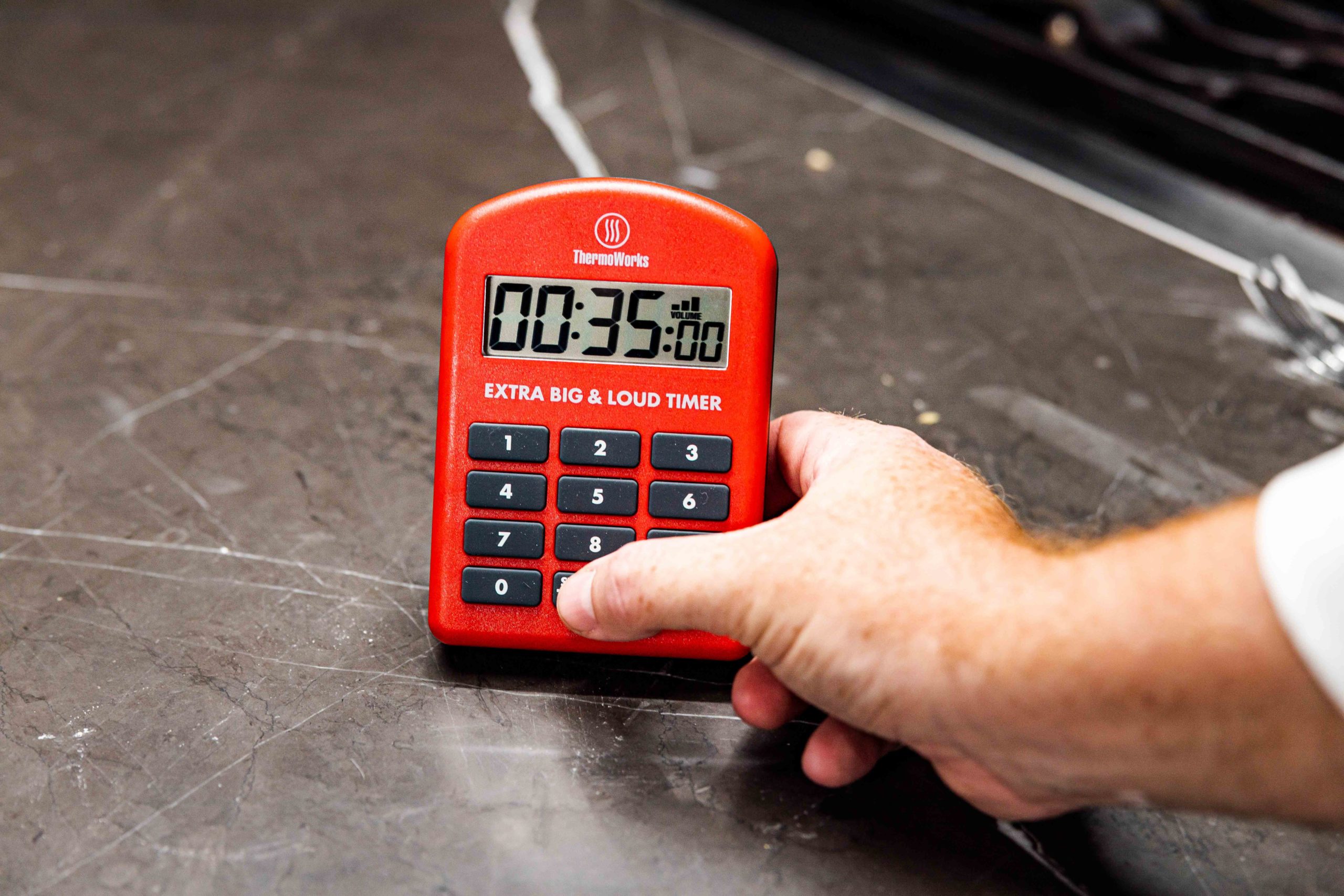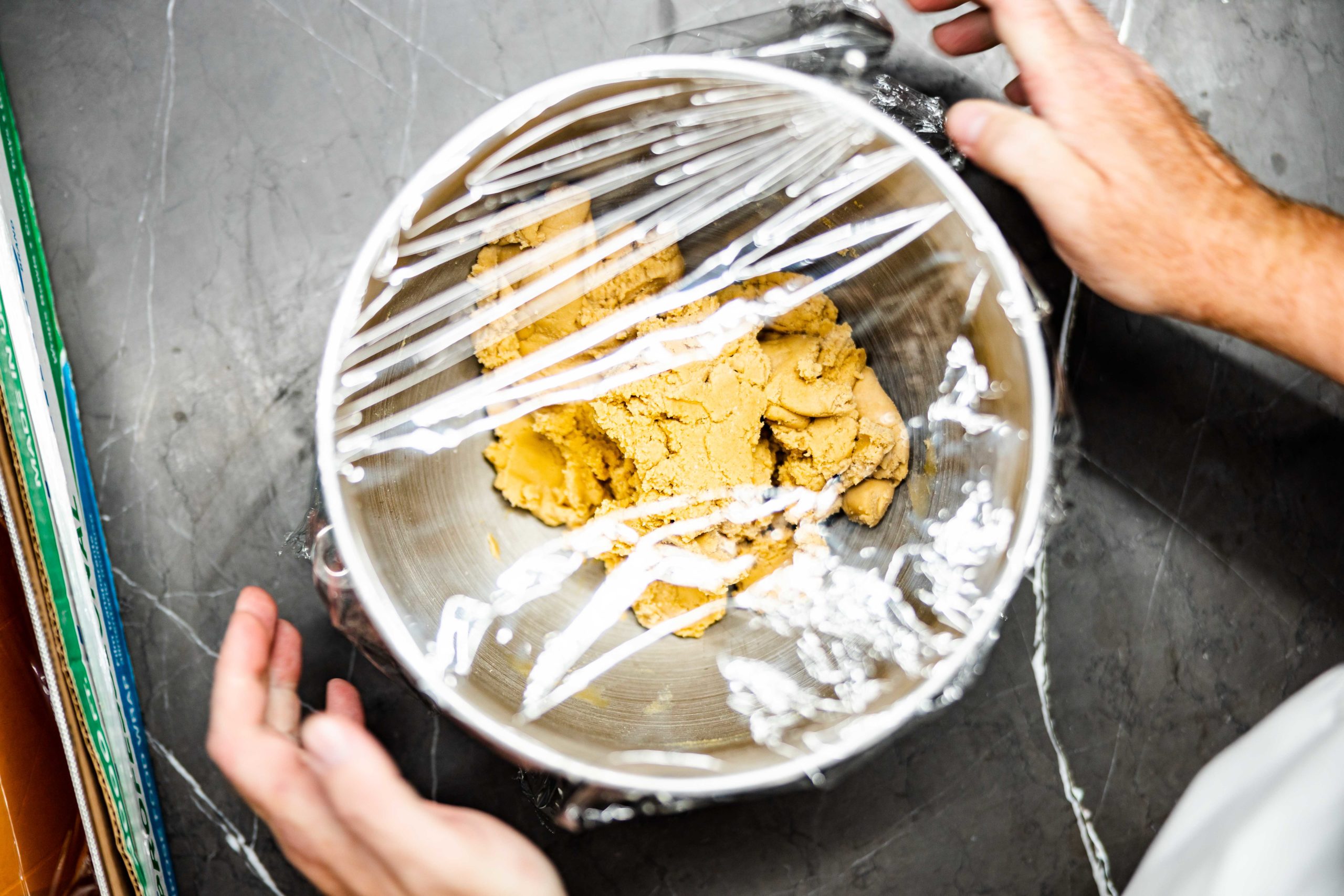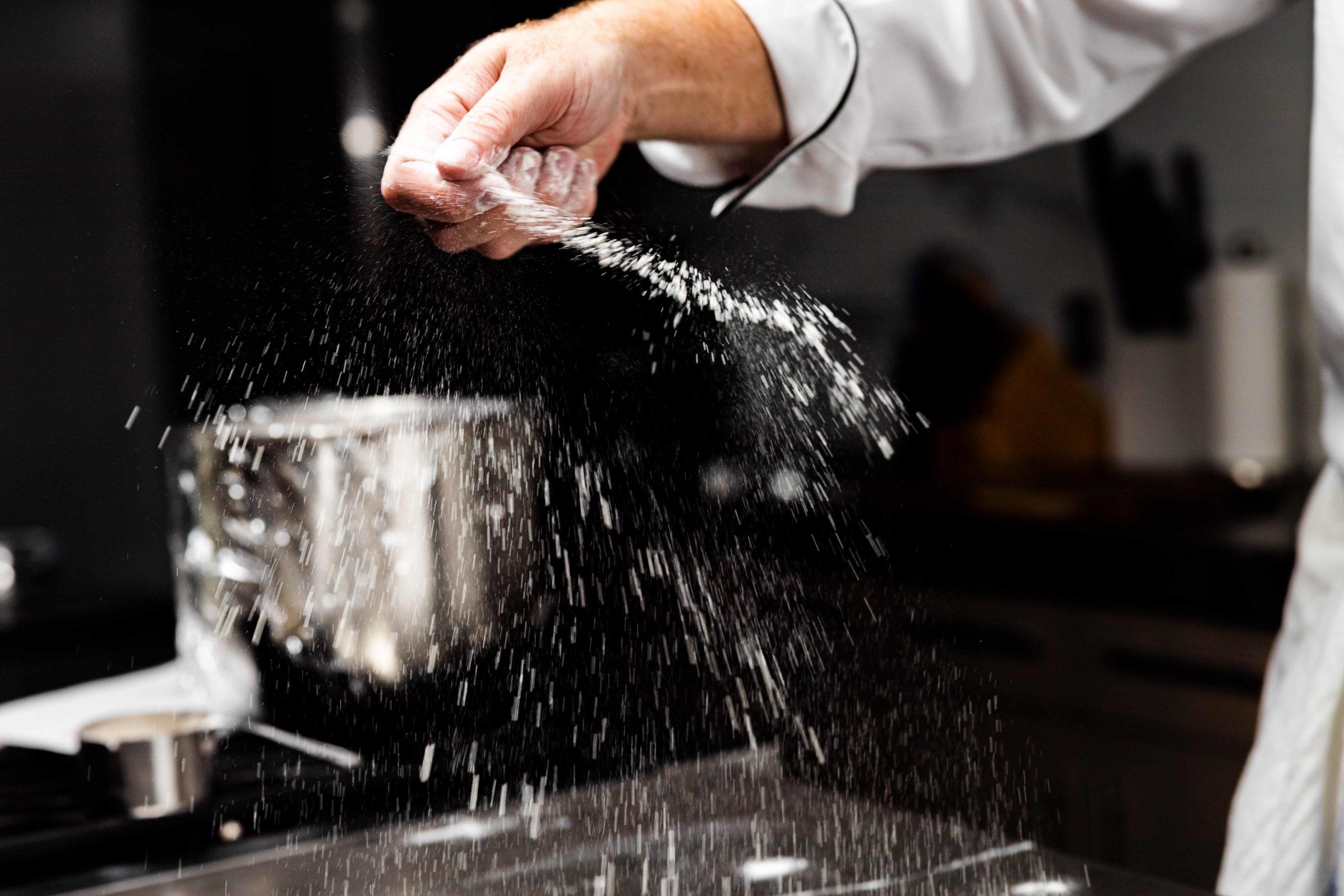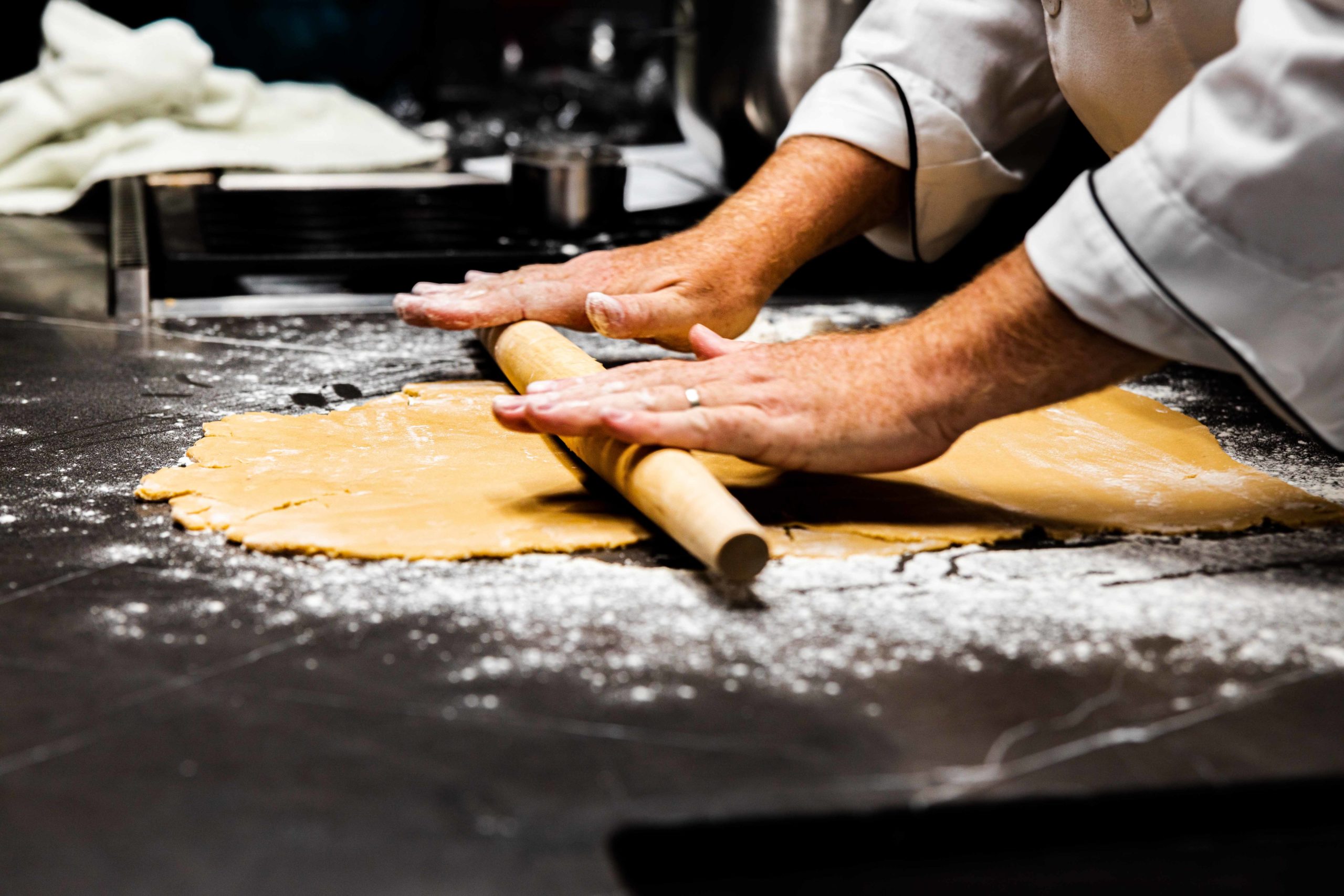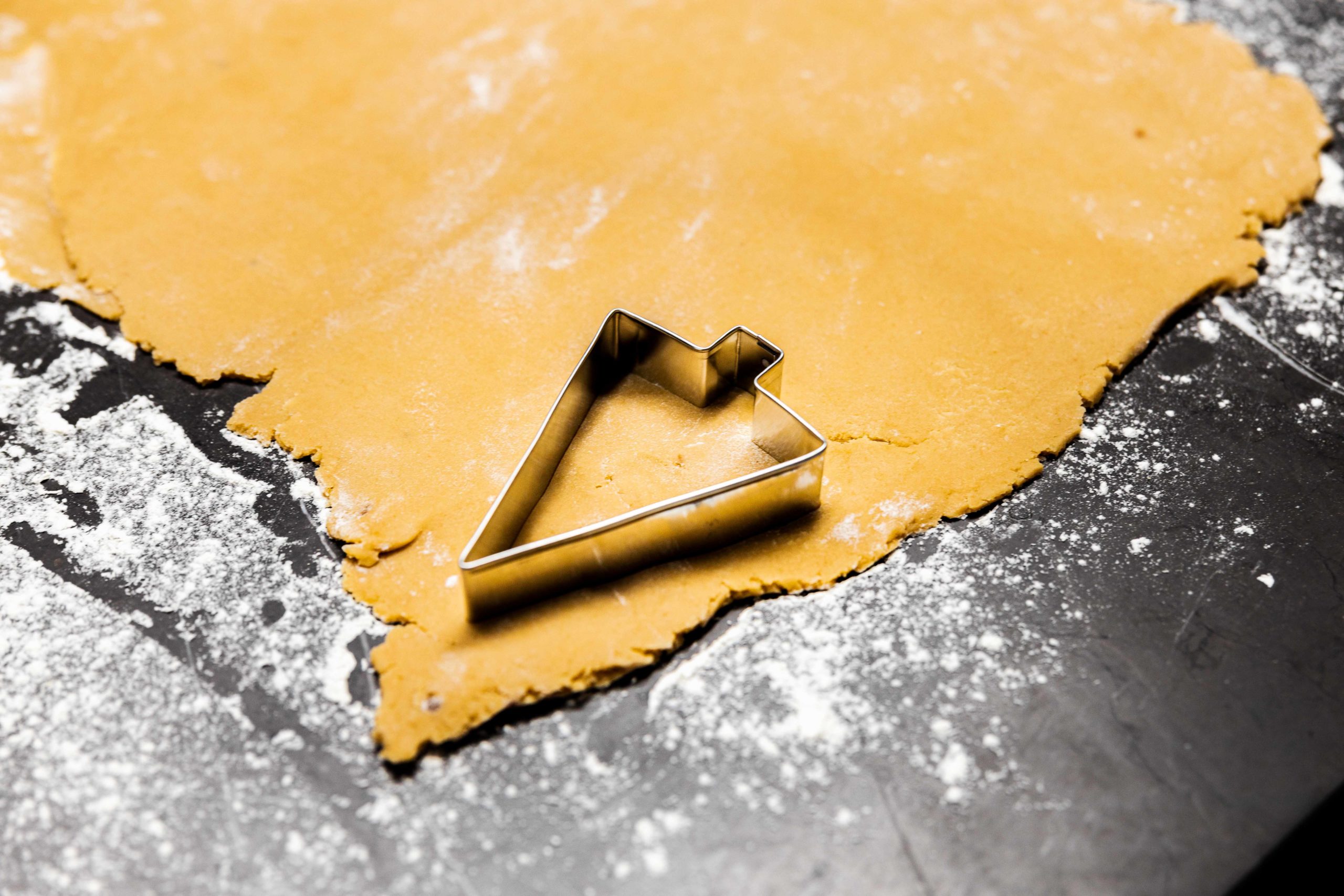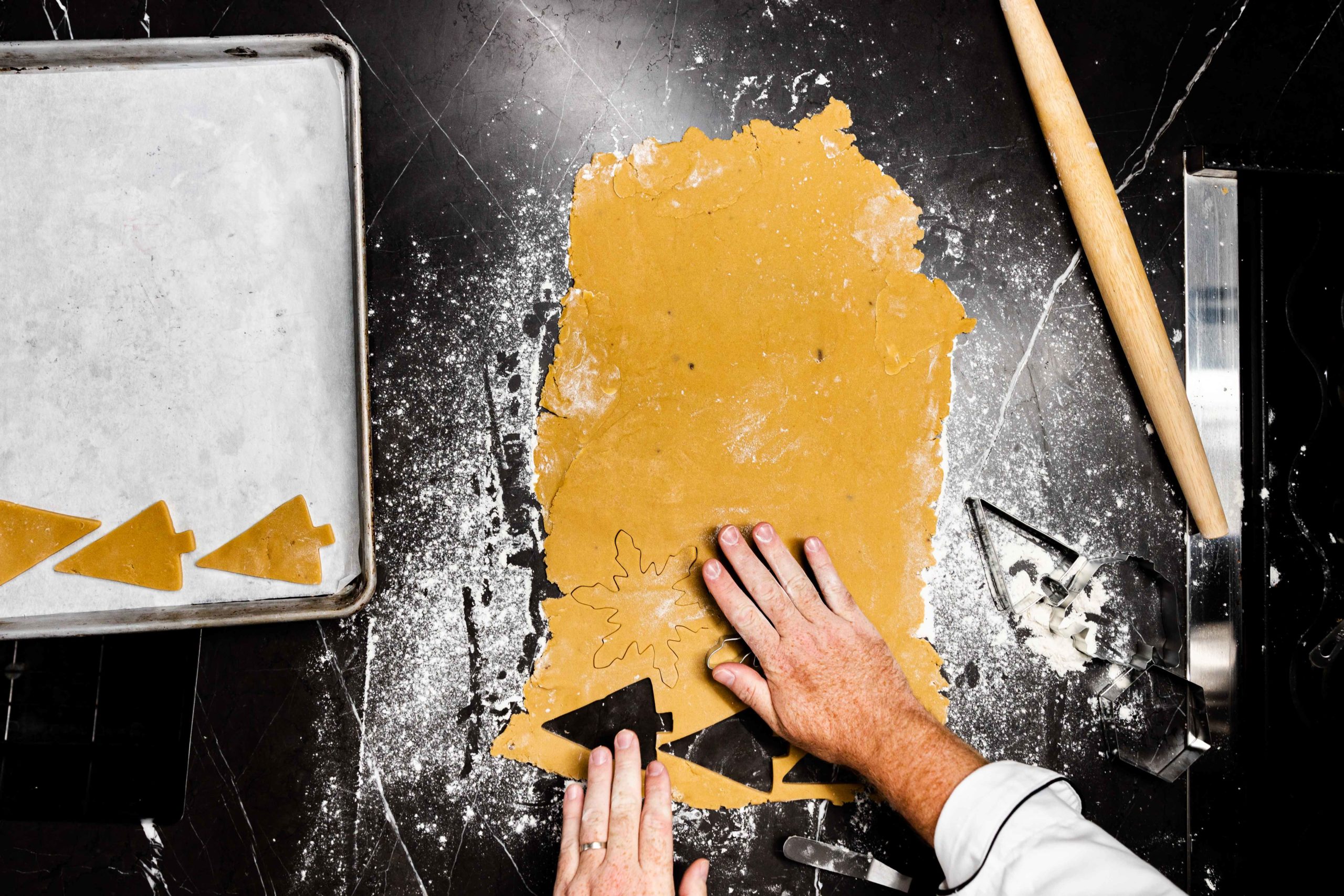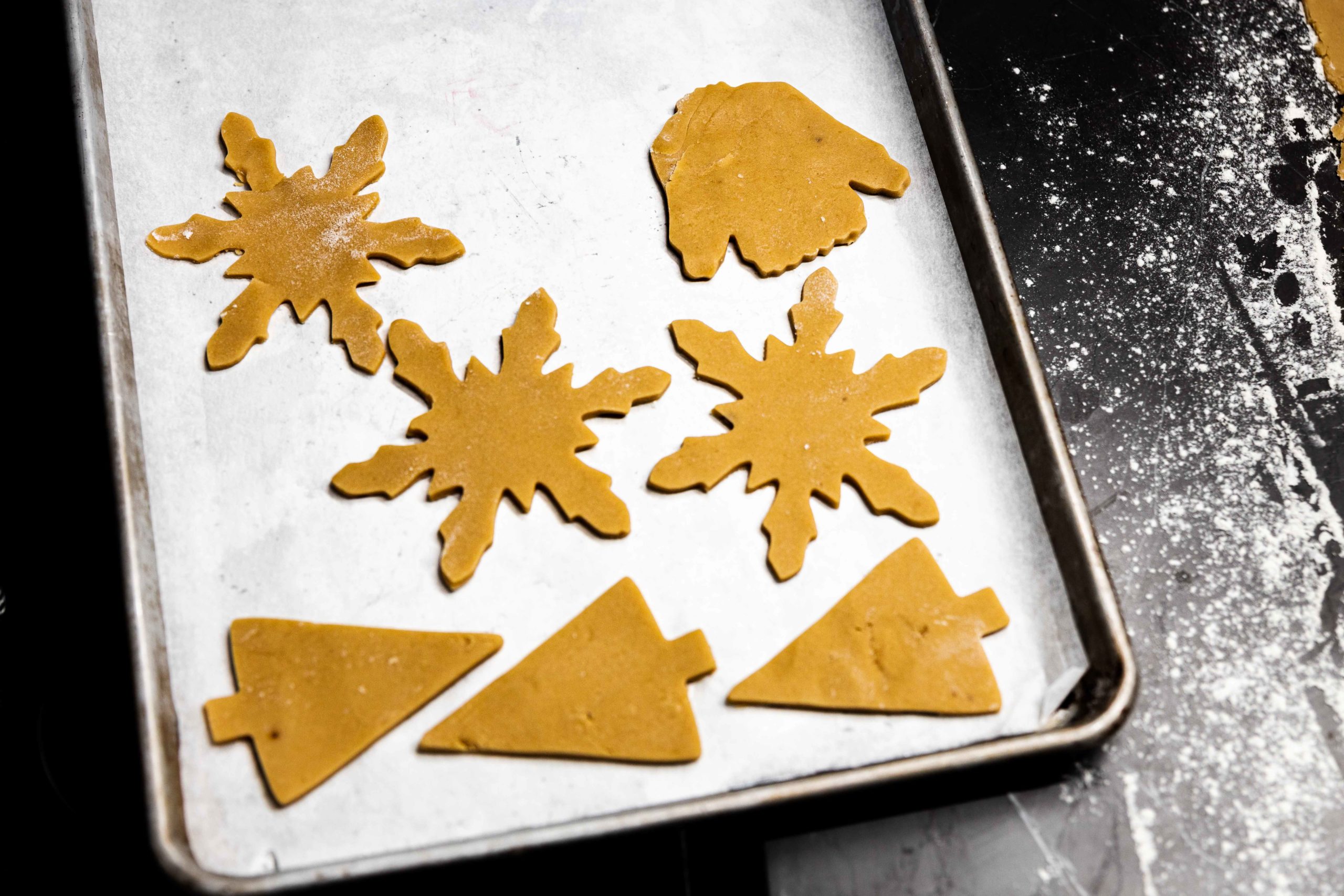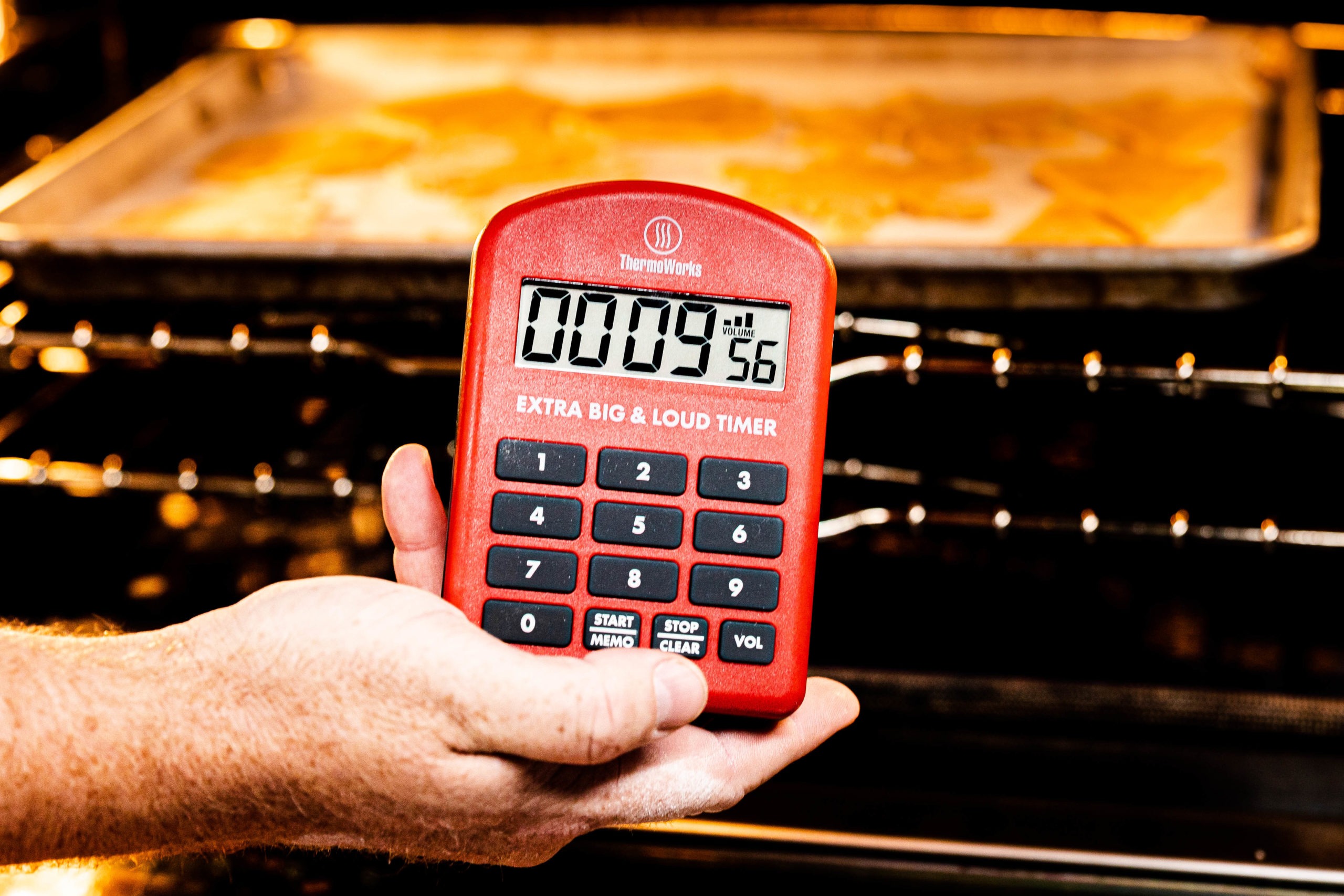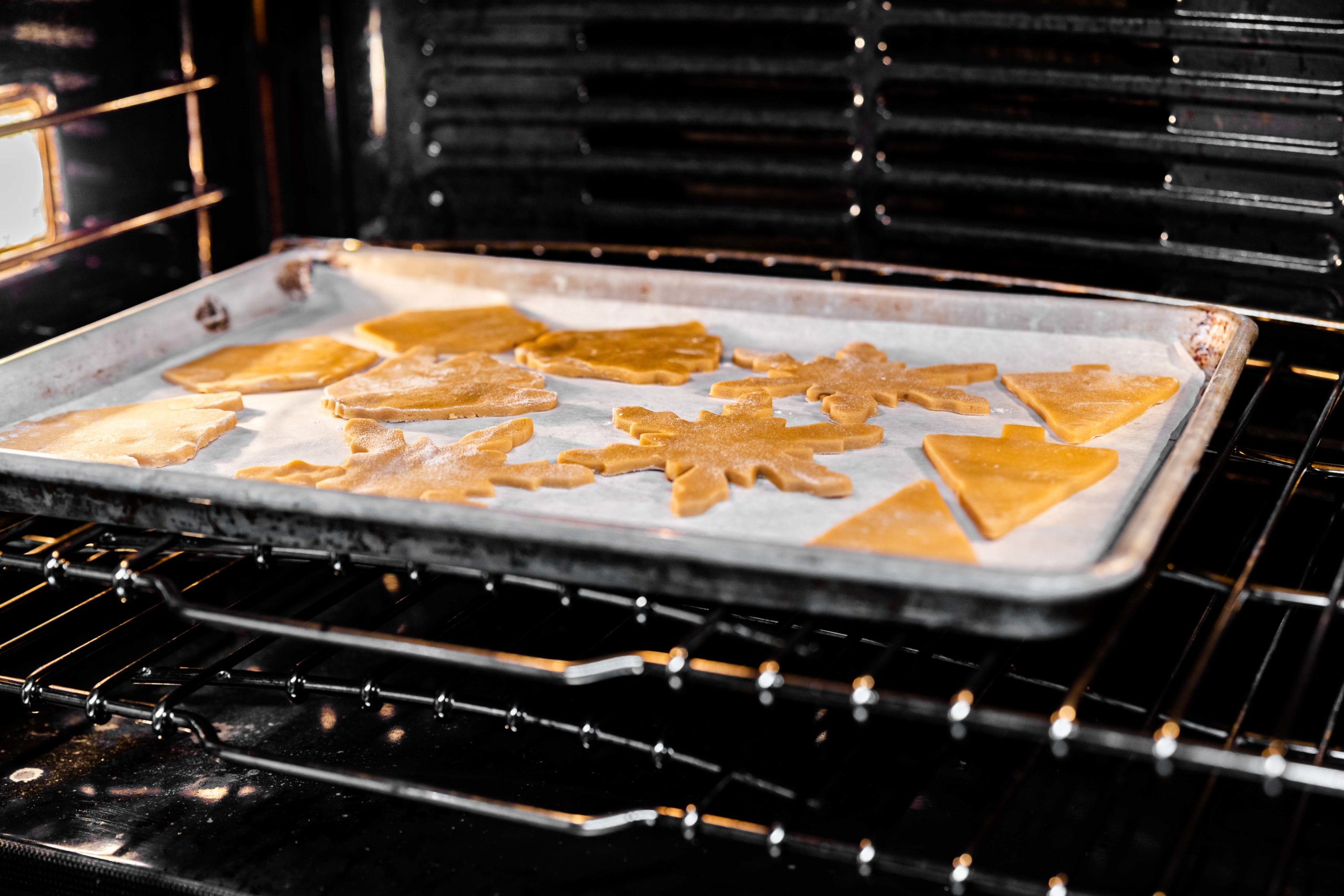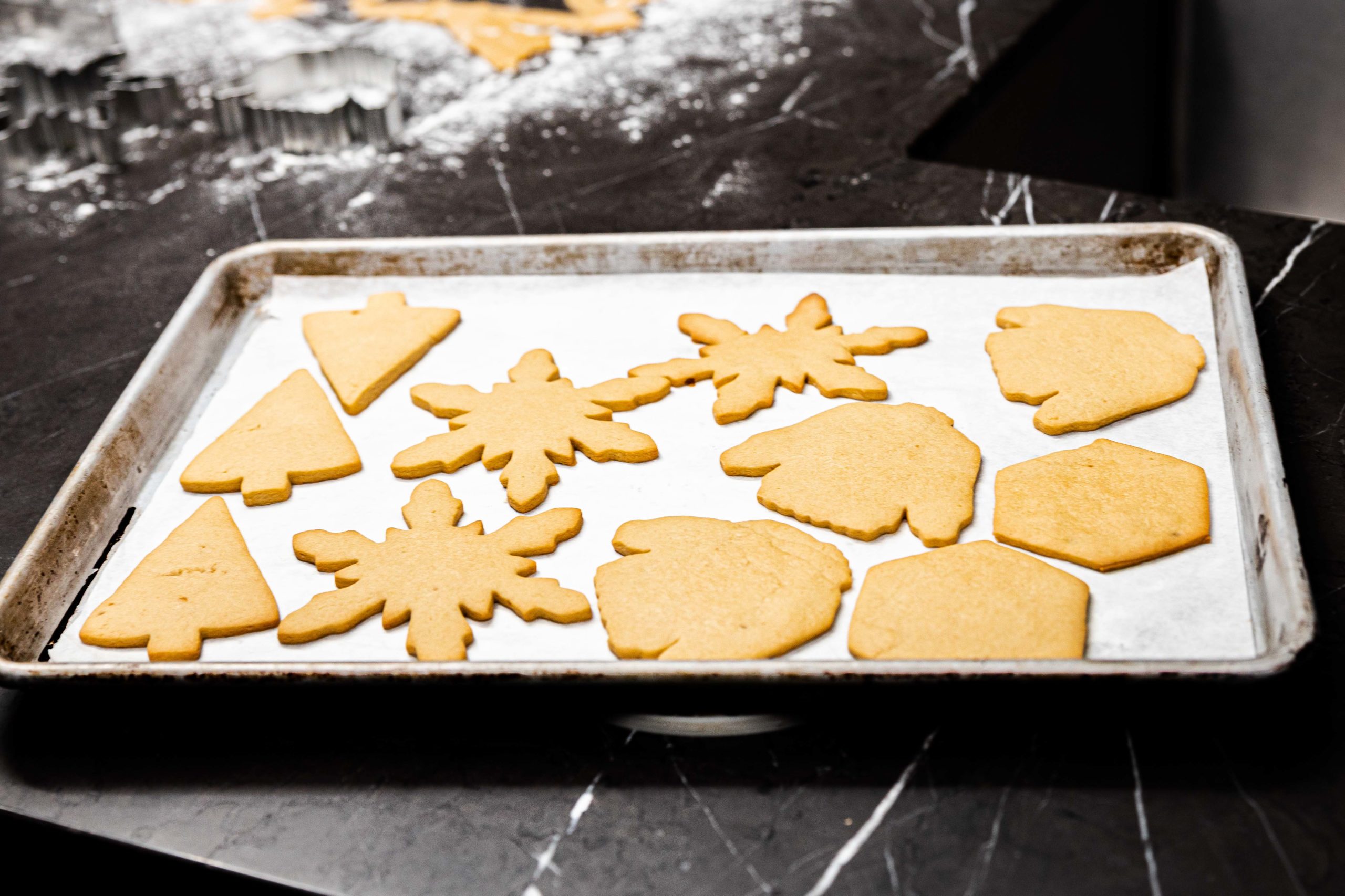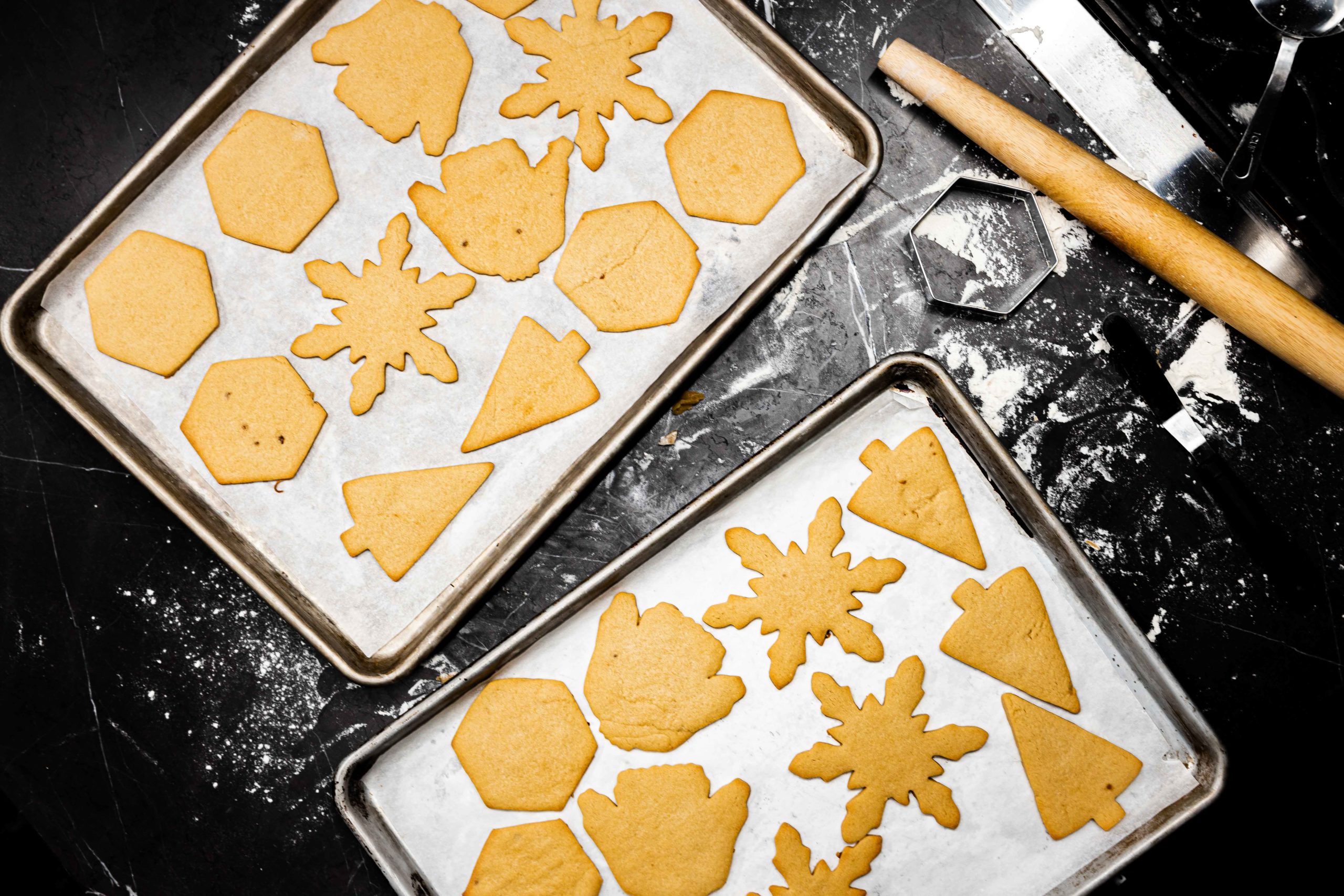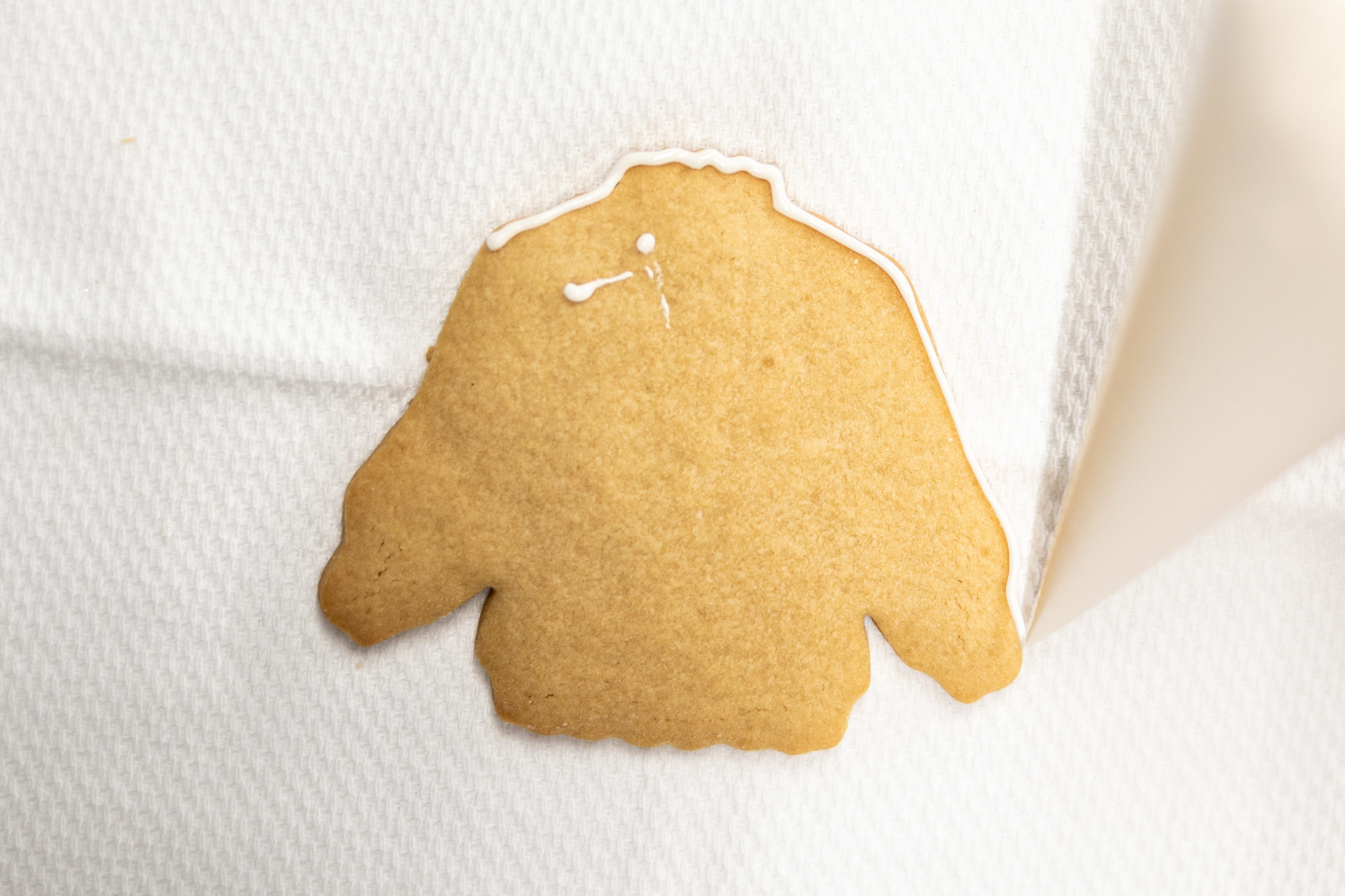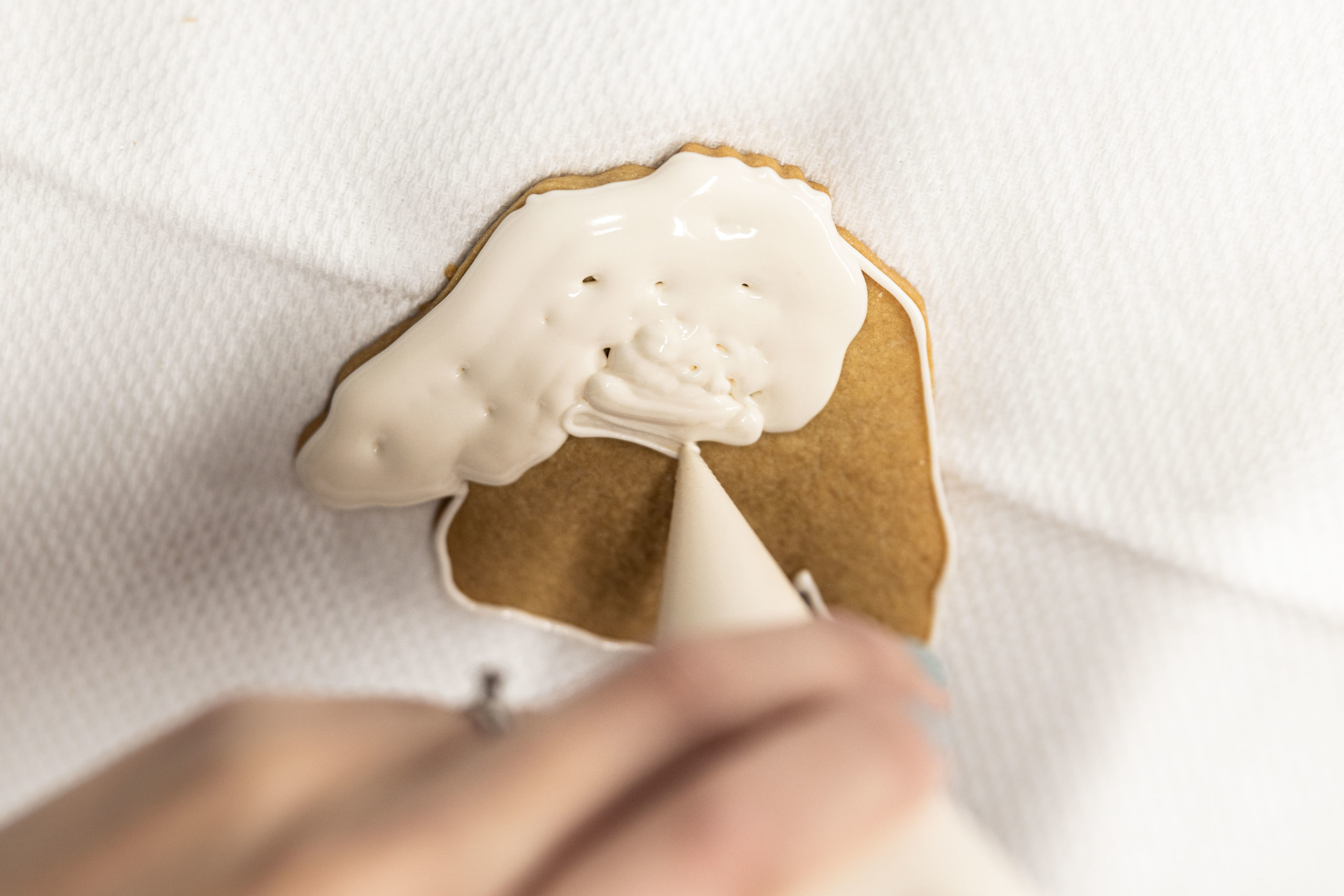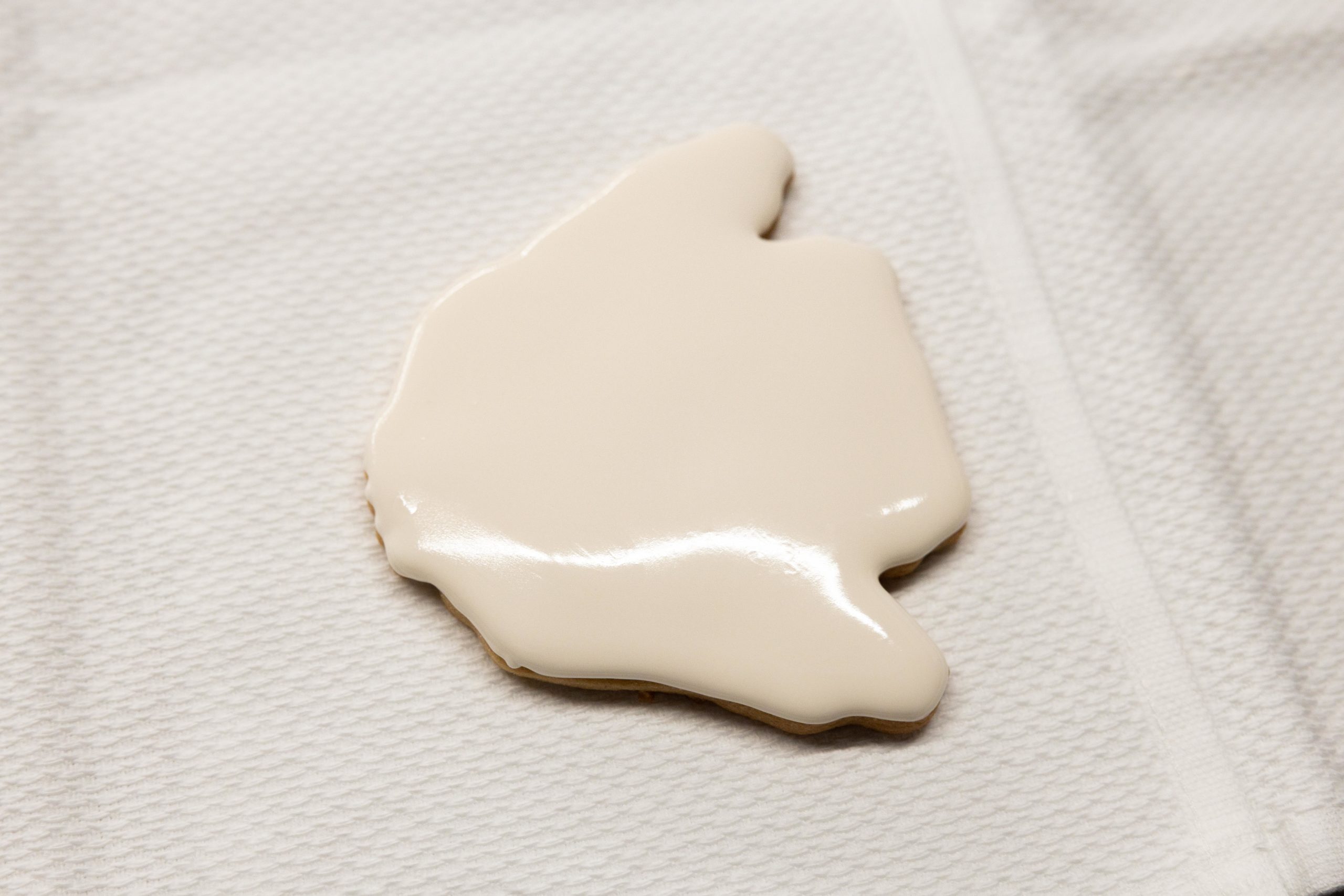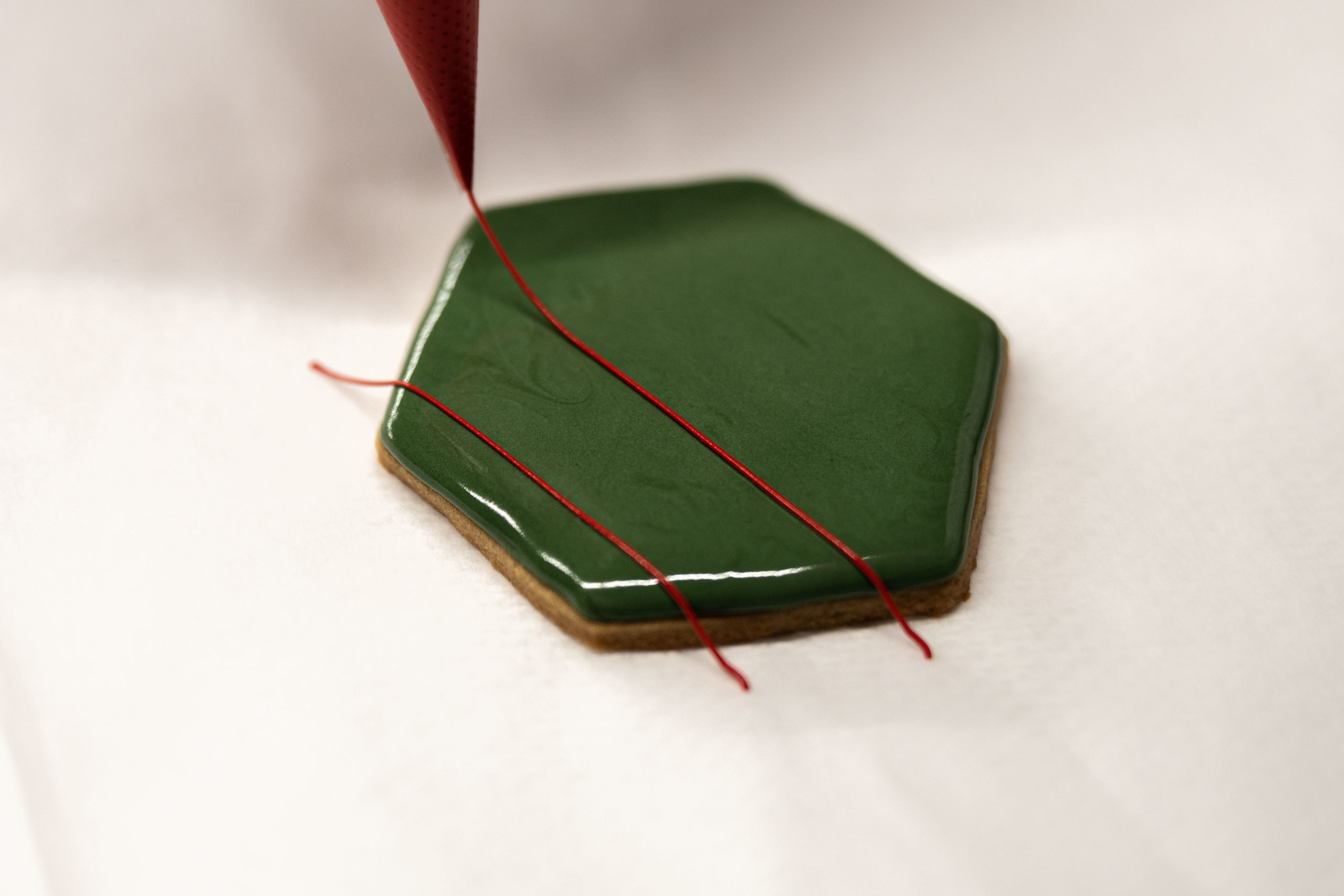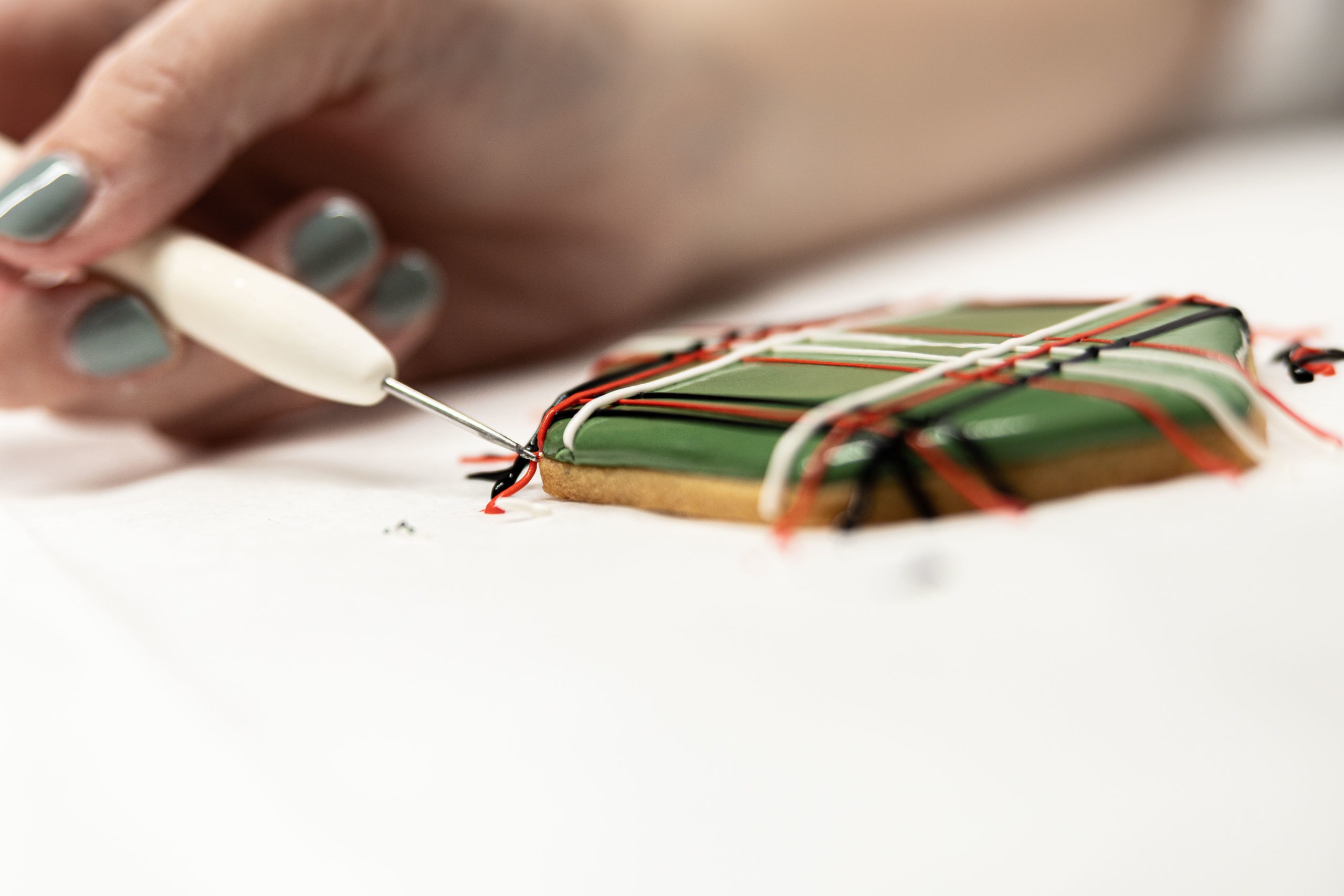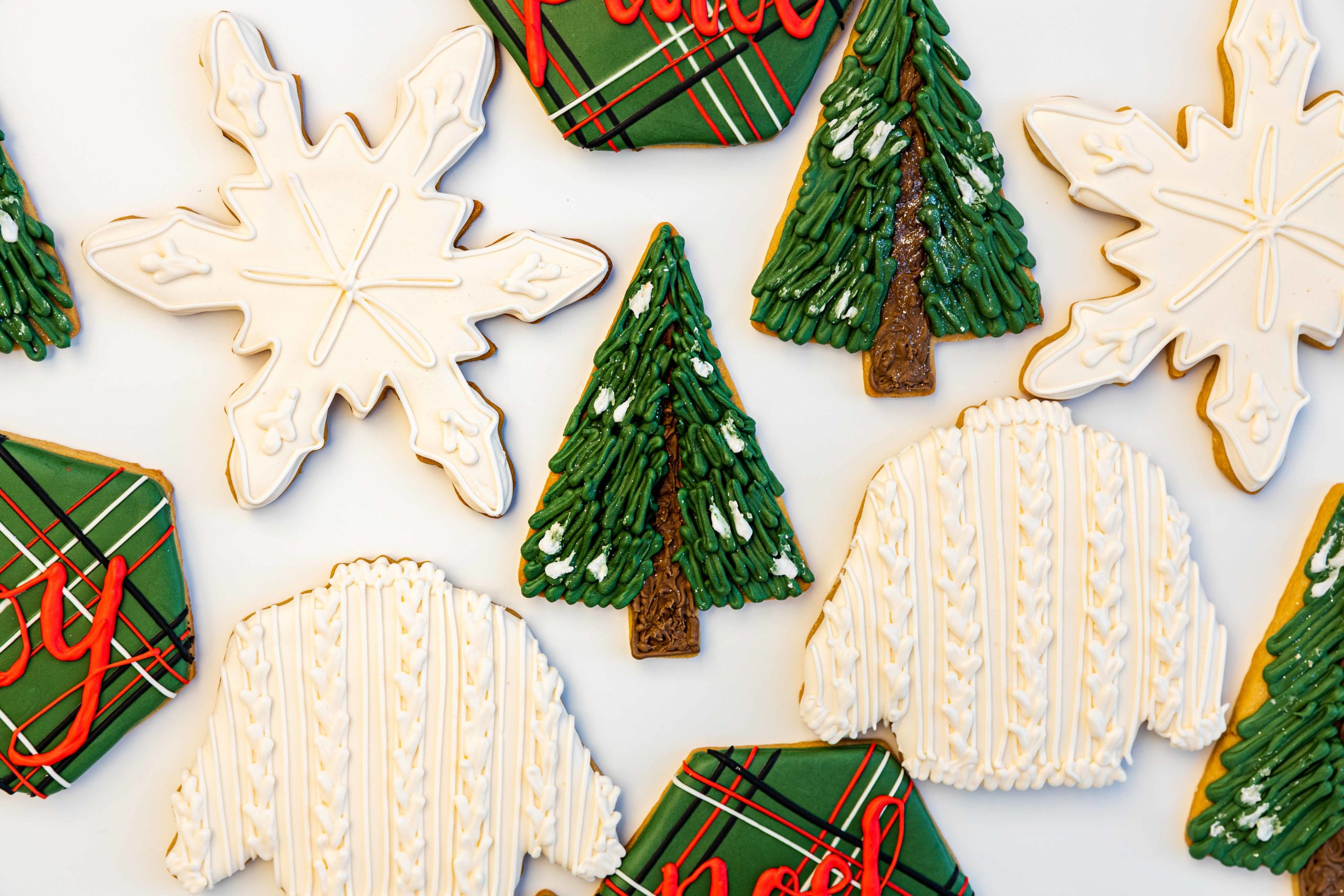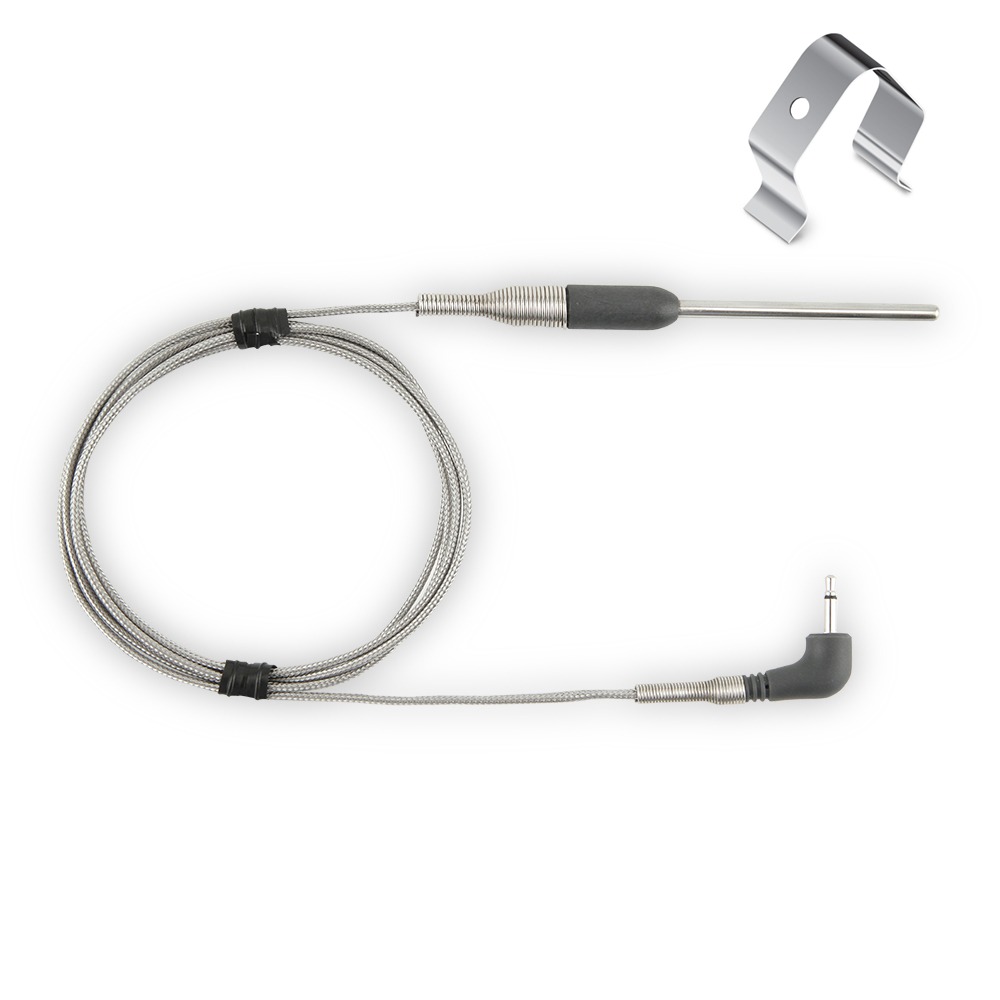Christmas Cookies: Key Temps
Baking can be tricky, but most people are comfortable making a batch of chocolate chip cookies. That being said, something as simple as a cookie has a lot happening on the inside. Let’s take a look! Warning: after reading this post you may never be able to look at a cookie the same way again.
How the Cookie Really Crumbles
In this video from TEDEd, we’re able to see all of the processes that begin the moment we shut the oven door. There are a number of things that happen as the dough evolves.
- Butter begins to melt at 92°F (33°C). Notice this temperature is below body temperature. That means it will melt in your mouth. Shortening’s melting point is about 117°F (47°C), it isn’t going to melt in your mouth. Have you ever taken a bite of a cookie and have a waxy film left in your mouth? That’s the unmelted shortening. Butter is the optimal fat to use not only for its rich flavor but for the mouth feel created from its lower melting point.
- Salmonella that could possibly be in the eggs is killed at 136°F (58°C). Eating raw cookie dough isn’t safe for this reason.
- Leavening—Sodium Bicarbonate (baking soda). It reacts with acids present in the dough to create carbon dioxide gas, and those bubbles leaven the cookie making it light. Baking soda does not need heat for its leavening action—just the presence of moisture and an acid, heat isn’t necessary (think of a vinegar and baking soda volcano). Baking powder needs the presence of an acid and heat to activate. Baking powder becomes fully active at 140°F (60°C).
- Proteins begin changing at 144°F (62°C). The proteins are like coiled up balls of string. When exposed to heat the protein strings unfold and create a linked structure making becoming nearly solid. This gives a set structure to the dough.
- Water boils at 212°F (100°C) at sea level. Steam that was bubbling inside escapes and leaves behind airy pockets. The cookie the dries out and cracks appear on the surface.
- Maillard Reaction—the process that provides browning and flavor—occurs at 310°F (154°C). Proteins and sugars break down and rearrange themselves into ring-like structures that reflect light. Flavor and aroma compounds are created, not just color.
- Caramelization is the last stage the cookie goes through. Caramelization is where sucrose molecules break down under high heat forming the smaller molecules of glucose and fructose. Caramelization in the cookie starts at 356°F (180°C). Learn more about sugar cooking and caramelization in our Caramel Apples post.
The Project
How does all of this science apply to our cookies? We opted to make cut-out Christmas cookies since it’s holiday time, rather than drop cookies like chocolate chip cookies as depicted in the video above. The cookies need to be sturdy enough to decorate, but tender enough to eat.
Cookie Spread: When making cut-out cookies, you want a dough that will retain the shape it was cut in after baking. Here are some tips to help your cookies resist spreading:
- Oven temperature. If your oven temperature is too low the dough won’t set quickly enough, and they will spread during baking.
- Incorporating air. Incorporating air by over-creaming the dough during mixing can cause a leavening action during the bake, causing spread. Have your mixer on medium-low to medium speed when mixing, and only mix until combined.
- Parchment paper. A cookie is more likely to spread on a greased baking sheet—parchment-lined is best.
- Chill the dough. Room-temperature dough will spread more when it’s placed into the oven than chilled dough will. Also, if the gluten that was developed in rolling doesn’t relax, the cookies will shrink in the areas where the gluten is the tightest, resulting in oddly-shaped cookies. Resting the dough in the fridge allows the gluten to rest.
The Recipe: We used a wonderful recipe from Red Umbrella Catering. It’s a classic sugar cookie made with brown sugar for a deeper flavor. The proprietor of that company, McKenna Mellville also did the amazing decorating on the cookies in this post. (Her cupcakes are equally beautiful!)
You can download their recipe at the bottom of this post.
Making the Dough: The cookie dough recipe is made via the creaming method: Paddling room-temperature butter with sugar, vanilla, and salt, then adding the egg, finishing by mixing in the pre-mixed dry ingredients. Be sure to scrape down the bowl as you mix.
Once the dough comes together, divide it in half, wrap the balls of dough in plastic wrap, and press into discs. The dough needs to chill for at least 35–40 minutes, but up to overnight is great. Many of the same principles of keeping the dough relaxed and cold that applied to the pie dough in our Temperature Tips to Perfect Pies post apply here to the cookie dough. It’s The Dance of the Chill all over again. Chilling after making the dough will allow the gluten that was developed during mixing to relax, and the butter will firm up to a more workable consistency.
Rolling and Cutting: After your dough has chilled, let it sit at room temperature until it’s of a clay-like malleable firmness—about 10-20 minutes. Unwrap the dough and roll it between two sheets of parchment paper (It’s important to do whatever it takes to avoid adding any additional flour to the cookie dough—it’ll just end up making the cookies dry and tough.) until it’s about 1/8–1/4″ thick. Leave the dough in the parchment sheets, and refrigerate for 10 minutes to allow the gluten to relax and the butter to firm up. Once it’s nice a chilled, remove the top sheet of parchment and cut into desired shapes, and place onto a parchment-lined baking sheet.
The cookies can be baked immediately, or the cut-out cookies can be frozen on the sheet, then stored in a bag and taken out and baked off as needed.
➤ Kitchen Tip: Anytime you’re baking, you need a timer. The best chefs don’t just rely on their memory to get things right. The Extra Big and Loud Timer is a fantastic device to use when you might need to run upstairs while you’re baking, in a noisy environment like a commercial kitchen, or in a house full of kids. Its volume can go up to 110dB, so you’ll be sure to hear this timer’s alarm.
Baking: Bake the cookies at 350°F (177°C) for about 10–12 minutes. To be safe and be sure we didn’t over bake the cookies we set the Extra Big and Loud Timer for 8 minutes. Look for cookies that have started to look slightly golden brown around the edges. This cookie, with its only-brown-sugar recipe, will appear darker from the start. Regardless of your recipe, keeping the dough chilled is essential when making cut-out cookies.
➤ Thermal Tip: Before baking your cookies, test your oven’s accuracy. ChefAlarm® along with the Air Probe and Grate Clip are what you need to monitor your oven’s temperature.
Decorating: Once cooled, the fun part can begin! We made royal icing (Downloadable recipe found below) in various colors and used the flooding technique on the cookies. Once the base coat of royal icing had dried completely, the cookies were decorated with more royal icing piping.
Cookies are incredibly scientific treats, and once you know what’s going on inside it’s easy to troubleshoot your own projects, and manipulate the variables needed to achieve the results you’re after this holiday season!
 Loading…
Loading…
 Loading…
Loading…
Shop now for products used in this post:


